Abstract
The most common adverse events experienced by hospitalized patients are drug related. While numerous studies have described the incidence and types of adverse drug events (ADEs), the actual effect of these events on patient outcomes have only been estimated. The studies that have described the effects of ADEs on patient outcomes have not stratified patients by severity of illness and hospital costs were estimated based on a percent of hospital charges. We designed a study to utilize the resources of our hospital information system to assess the attributable effects of ADEs on hospital length of stay and cost of hospitalization. This approach emphasized the difference between study patients and their matched control patients rather than overall differences between patients with and without ADEs. In addition, we used nursing acuity data to help adjust severity of illness within DRG groups and actual hospital costs were used instead of estimated costs. This study found that while the average length of stay for patients with ADEs was 8.19 days compared to 4.36 days for matched control patients, the attributable difference due to the ADEs was 1.94 days. Similar methods found that patients with ADEs had an average cost of hospitalization of $10,584 compared to $5,350 for those without and the attributable difference due to ADEs was $1,939. This indicates that the 569 ADEs at our hospital during 1992 resulted in an additional 1,104 extra patient days at a cost of $1,103,291.
Full text
PDF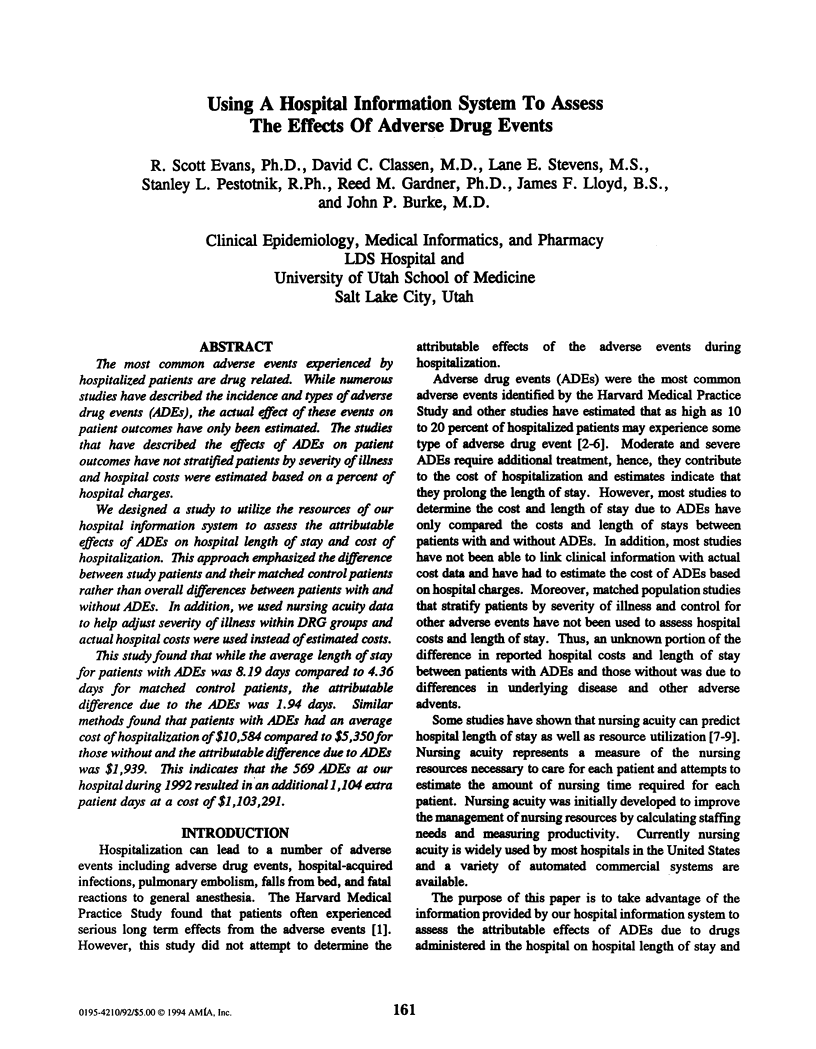
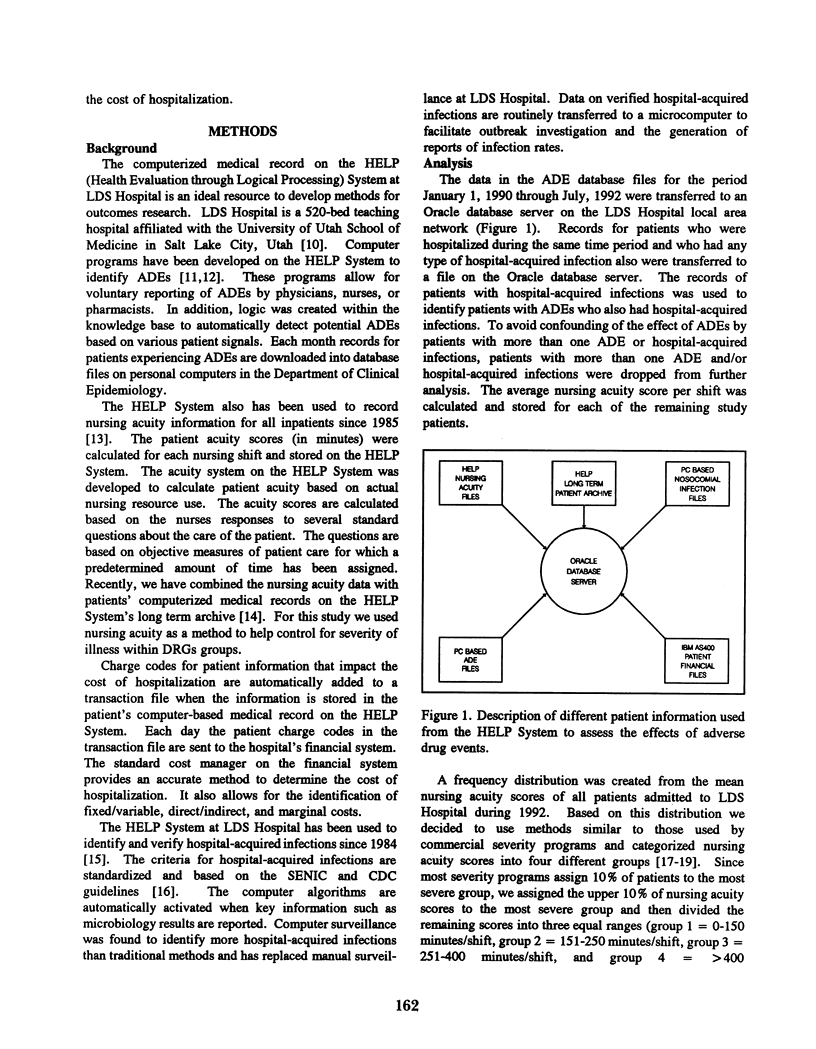
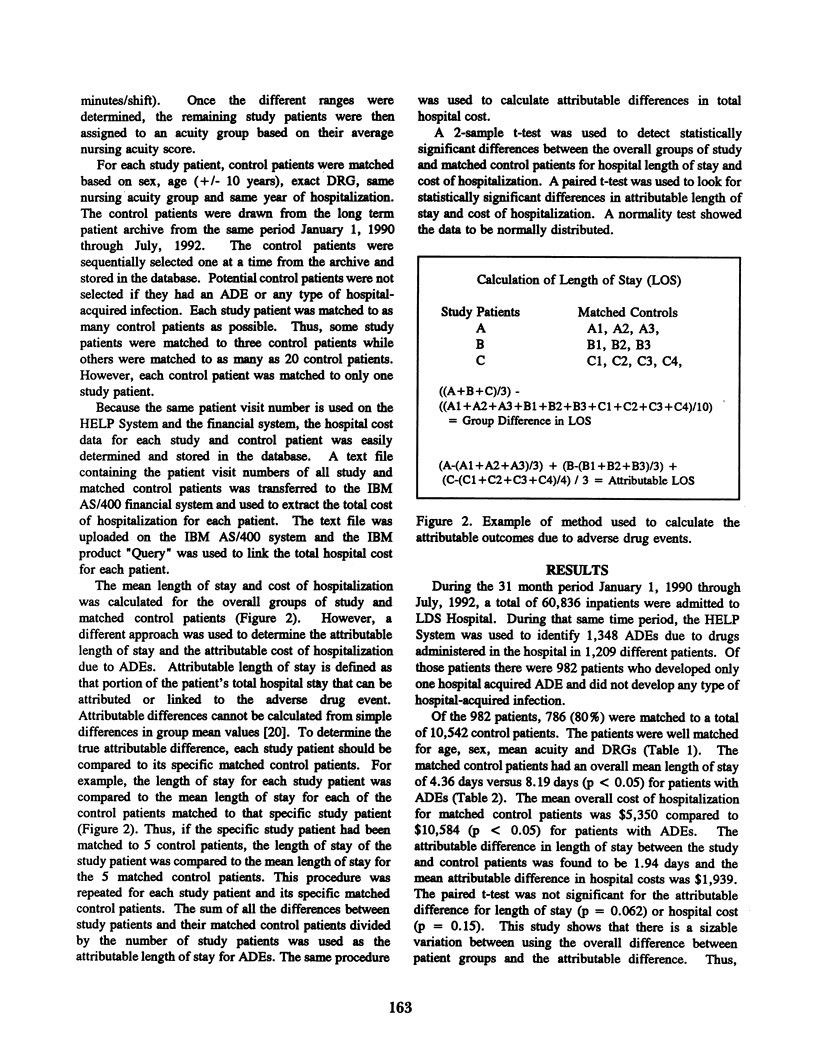
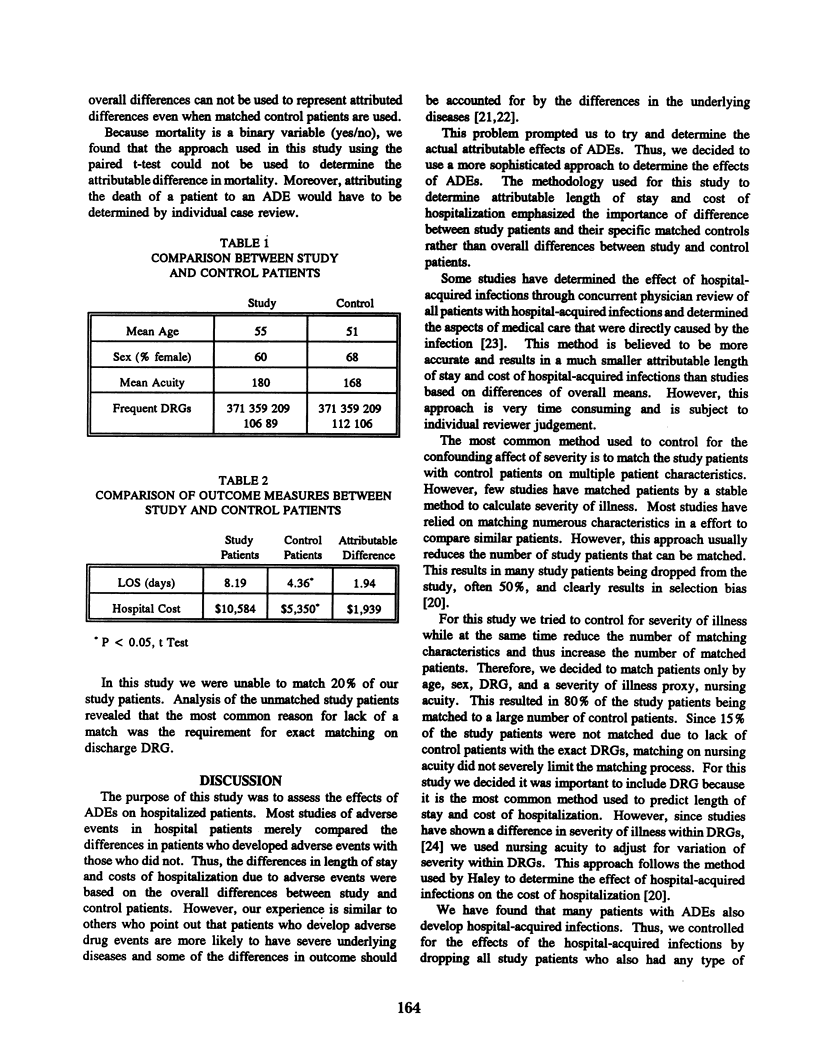
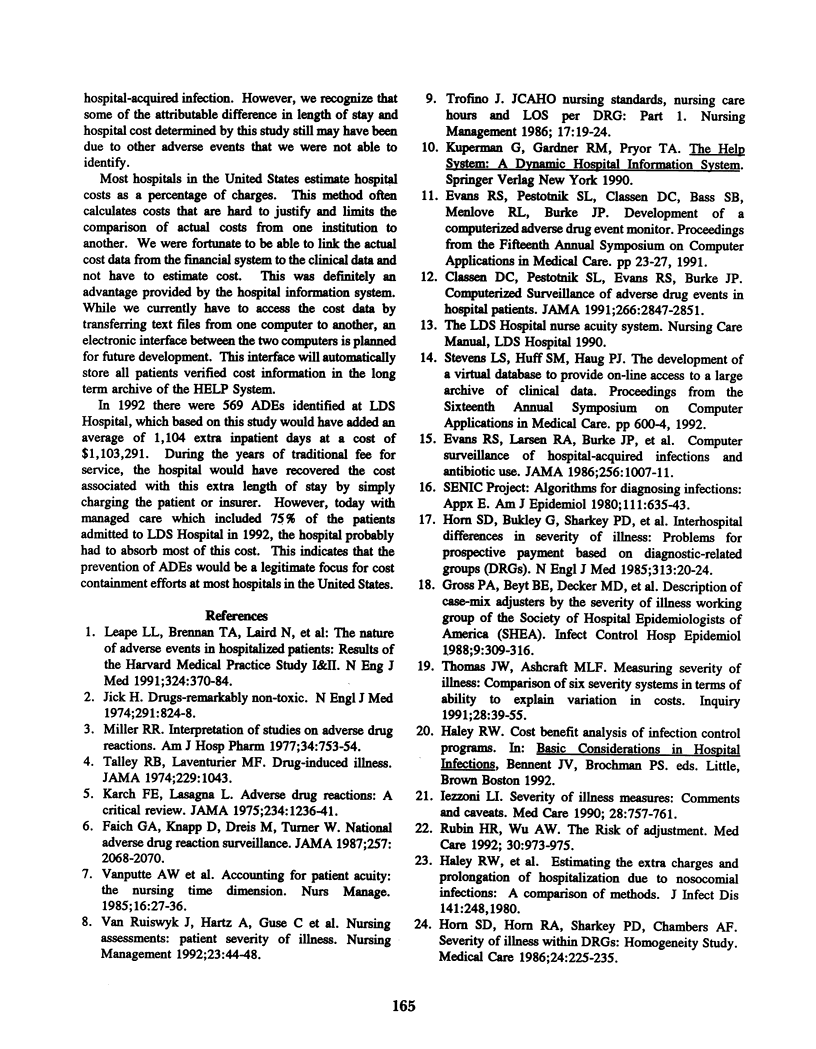
Selected References
These references are in PubMed. This may not be the complete list of references from this article.
- Brennan T. A., Leape L. L., Laird N. M., Hebert L., Localio A. R., Lawthers A. G., Newhouse J. P., Weiler P. C., Hiatt H. H. Incidence of adverse events and negligence in hospitalized patients. Results of the Harvard Medical Practice Study I. N Engl J Med. 1991 Feb 7;324(6):370–376. doi: 10.1056/NEJM199102073240604. [DOI] [PubMed] [Google Scholar]
- Classen D. C., Pestotnik S. L., Evans R. S., Burke J. P. Computerized surveillance of adverse drug events in hospital patients. JAMA. 1991 Nov 27;266(20):2847–2851. [PubMed] [Google Scholar]
- Evans R. S., Larsen R. A., Burke J. P., Gardner R. M., Meier F. A., Jacobson J. A., Conti M. T., Jacobson J. T., Hulse R. K. Computer surveillance of hospital-acquired infections and antibiotic use. JAMA. 1986 Aug 22;256(8):1007–1011. [PubMed] [Google Scholar]
- Faich G. A., Knapp D., Dreis M., Turner W. National adverse drug reaction surveillance: 1985. JAMA. 1987 Apr 17;257(15):2068–2070. [PubMed] [Google Scholar]
- Gross P. A., Beyt B. E., Jr, Decker M. D., Garibaldi R. A., Hierholzer W. J., Jr, Jarvis W. R., Larson E., Simmons B., Scheckler W. E., Harkavy L. M. Description of case-mix adjusters by the Severity of Illness Working Group of the Society of Hospital Epidemiologists of America (SHEA). Infect Control Hosp Epidemiol. 1988 Jul;9(7):309–316. doi: 10.1086/645860. [DOI] [PubMed] [Google Scholar]
- Haley R. W., Schaberg D. R., Von Allmen S. D., McGowan J. E., Jr Estimating the extra charges and prolongation of hospitalization due to nosocomial infections: a comparison of methods. J Infect Dis. 1980 Feb;141(2):248–257. doi: 10.1093/infdis/141.2.248. [DOI] [PubMed] [Google Scholar]
- Horn S. D., Bulkley G., Sharkey P. D., Chambers A. F., Horn R. A., Schramm C. J. Interhospital differences in severity of illness. Problems for prospective payment based on diagnosis-related groups (DRGs). N Engl J Med. 1985 Jul 4;313(1):20–24. doi: 10.1056/NEJM198507043130105. [DOI] [PubMed] [Google Scholar]
- Horn S. D., Horn R. A., Sharkey P. D., Chambers A. F. Severity of illness within DRGs. Homogeneity study. Med Care. 1986 Mar;24(3):225–235. doi: 10.1097/00005650-198603000-00005. [DOI] [PubMed] [Google Scholar]
- Iezzoni L. I. Severity of illness measures. Comments and caveats. Med Care. 1990 Sep;28(9):757–761. doi: 10.1097/00005650-199009000-00001. [DOI] [PubMed] [Google Scholar]
- Jick H. Drugs--remarkably nontoxic. N Engl J Med. 1974 Oct 17;291(16):824–828. doi: 10.1056/NEJM197410172911605. [DOI] [PubMed] [Google Scholar]
- Karch F. E., Lasagna L. Adverse drug reactions. A critical review. JAMA. 1975 Dec 22;234(12):1236–1241. [PubMed] [Google Scholar]
- Miller R. R. Interpretation of studies on adverse drug reactions. Am J Hosp Pharm. 1977 Jul;34(7):753–754. [PubMed] [Google Scholar]
- Rubin H. R., Wu A. W. The risk of adjustment. Med Care. 1992 Nov;30(11):973–975. doi: 10.1097/00005650-199211000-00001. [DOI] [PubMed] [Google Scholar]
- Thomas J. W., Ashcraft M. L. Measuring severity of illness: six severity systems and their ability to explain cost variations. Inquiry. 1991 Spring;28(1):39–55. [PubMed] [Google Scholar]
- Trofino J. A reality based system for pricing nursing service. Nurs Manage. 1986 Jan;17(1):19–24. [PubMed] [Google Scholar]
- Van Ruiswyk J., Hartz A., Guse C., Sigmann P., Porth C., Buck K. Nursing assessments: patient severity of illness. Nurs Manage. 1992 Sep;23(9):44-6, 48. [PubMed] [Google Scholar]
- Vanputte A. W., Sovie M. D., Tarcinale M. A., Stunden A. E. Accounting for patient acuity: the nursing time dimension. Nurs Manage. 1985 Oct;16(10):27–36. [PubMed] [Google Scholar]


